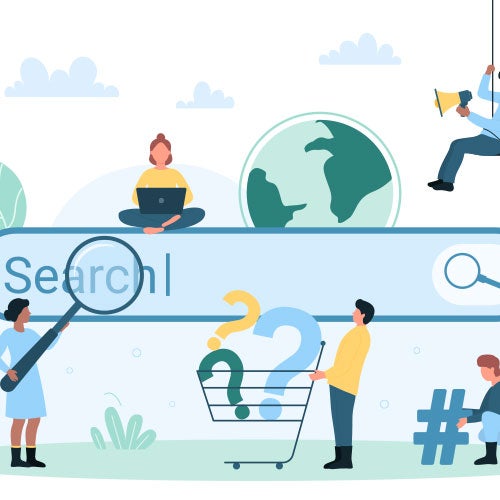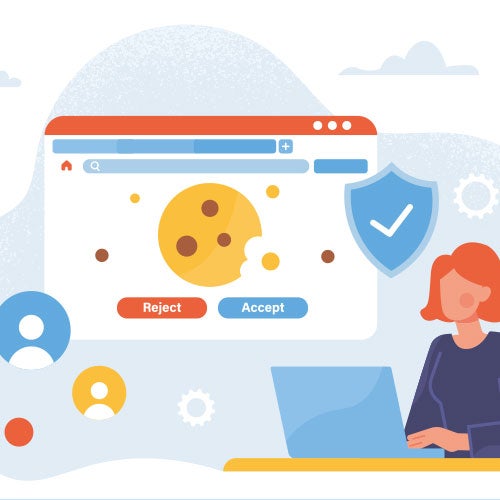Posted on 7/21/2017 in Digital Marketing
To redesign or not to redesign - that is the question.
How do you know when the time is right to make the investment in your business to redesign your website? Your website is the face of your company and if utilized properly, can also be an extension of your sales team. Therefore, you want to make sure that you make the right impression with your existing and potential customers when they visit your site. If you are on the fence, check out our top 10 reasons why you should consider to redesign your website.
1.) Poor User Experience
If you are noticing things like: a high bounce rate, low average time on page, abandoned shopping carts, or maybe you have even gotten customer feedback about your site being difficult to use, it’s time to think about the experience that your users are having on your site. Is the information they’re looking for easy to find? Is the site cluttered? How many clicks does it take for them to complete the task they came to your site for in the first place. A site that is intuitive and easy to use will keep users coming back.
2.) Looks Outdated
Design trends change pretty frequently and while you don’t need to completely redesign your website every time a new fad comes along, you want to update your design enough to stay fresh. There is no globally agreed upon number for how long you should go between redesigns but a good rule of thumb is every 2-3 years. If it’s been longer than 3 years since you gave your site a facelift, it might be time to consider a refresh.
3.) CMS is Due for a Major Upgrade
Depending on what is involved with the upgrade process, it might actually be more cost effective to start fresh on a clean install of the newer version of the platform. It especially makes sense if there have been new features added to the latest version of the CMS that your company wants to take advantage of. Custom functionality can always be built but if you are able to take advantage of out-of-the-box elements versus having to pay someone to build them, that’s definitely a win.
4.) No Longer Reflects Current Offerings/Business strategy
Over time, the goals and business objectives of your company may change, so you want to make sure your website keeps pace. Some common drivers for this type of change being needed might be a heavy push on a particular product or service offering, or perhaps a new target audience that you are trying to appeal to.
5.) Difficult to Update Content/Templates aren’t Flexible Enough for Content Needs
While you can go years without updating your website design, you should be updating your content no less than once a week. You definitely don’t want to have to jump through hoops, coordinating time with a web developer or IT every time you need to add or edit some content on your site. If you find yourself increasingly frustrated with the ease and speed of making simple content changes, or you aren’t able to lay pages out in the way you want, you have probably outgrown your current site. If the look still works for you, there is still plenty that can be done on the backend to make content entry as simple as typing into a Word doc.
6.) Branding Change
Has your company recently undergone a rebranding? Similarly to item #4, you want to make sure your website reflects the current state of your business. If you have changed your logo, colors, imagery, messaging, etc. – then you should take a holistic look at your site to keep it aligned with your brand image.
7.) Performance or Functionality Issues
Poor load times or broken functionality on your site will drive visitors away. They’ll get annoyed with the time it takes to accomplish what they came to the site for and your business will suffer. If you are having issues with functionality of a key area of your site, you will want to examine how complicated it would be to fix it versus building something new. Depending on the complexity, you may find that you would have less headaches and be able to create an overall better site experience with a redesign.
8.) Lack of Conversions
There could be a number of reasons why users are not converting on your site. There could be issues with a lack of clear calls to action, accessibility problems, hard to find content, complicated user flows with too many clicks, etc. Any of these reasons could prevent users from taking action on your site. By using a tool like HotJar, you can get some great insights into how your users are interacting with your current content and you can use that knowledge to make informed decisions about how to handle content and layout in your redesign.
9.) Not SEO-Friendly
This is obviously a pretty big one. You want to make sure you are being found on search engines. Depending on how your site was built, just because the content exists, it doesn’t mean that it’s being read and indexed by Google. Do all of your pages have unique content with unique titles and Meta descriptions? Are you using tabs or accordions with content that is “hidden” to Google? Most content management systems have some type of SEO-friendly functionality built in but if you are on an old version, it may not be current enough to follow present-day SEO best practices.
10.) Not Responsive/Difficult to Use on Mobile
According to StatCounter, Mobile internet usage surpassed desktop in 2016! So if your site doesn’t work well on mobile, you’re at risk of alienating A LOT of visitors. Despite this statistic, conversion rates on smartphones are still much lower than on laptops/desktops. Depending on your industry, you might want to leverage adaptive design instead of responsive for a customized mobile experience. No matter what design method you use, you want to keep things simple for those accessing your site on their phone. If someone is trying to look something up on their phone and can’t easily access the info they need, they likely aren’t going to wait until they get home to jump on their computer, they will go somewhere else.
If any of the pain points mentioned above sound familiar, you might want to pay particular attention to the points presented here and redesign your website. I like to think of a website the same way I think about my car. When you get to a point where you are needing to put a lot of time and money into repairs, you might just be better off buying a new one. It’s no fun living in a constant state of frustration and anxiety hoping that your car (or site) doesn’t break.
Still have questions?
Contact one of our knowledgeable account managers to help explain what’s involved and even perform a cost-benefit analysis to see if a website redesign makes sense for your business.
Related Articles

Elevating Your Brand: The Transformative Power of Website Design
In the digital age, your website is often the first point of contact between your brand and potential customers. It's not just a platform to showcase [...]

Navigating the Effects of SEO Algorithm Adjustments in 2024 on Your Website's Rankings
In the fast-paced world of digital marketing, staying ahead of algorithm updates is crucial for maintaining a competitive edge. As we step into 2024, [...]

Rethinking Digital Strategies: Marketing in the Post-Third-Party Cookie Landscape
In the ever-evolving realm of digital marketing, the impending demise of third-party cookies poses a significant challenge for businesses worldwide. [...]
